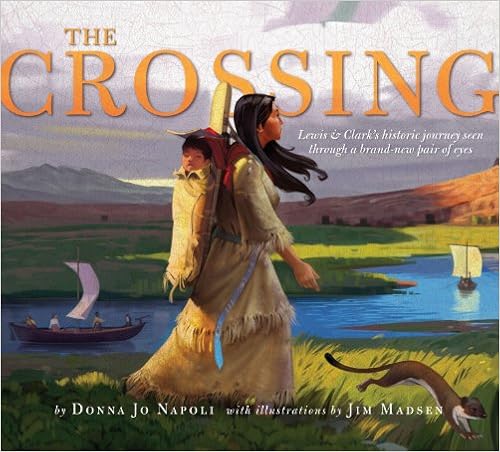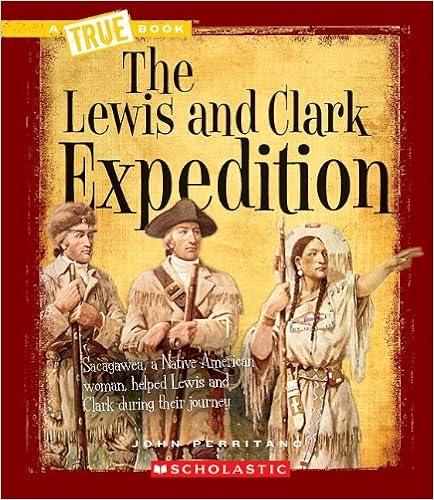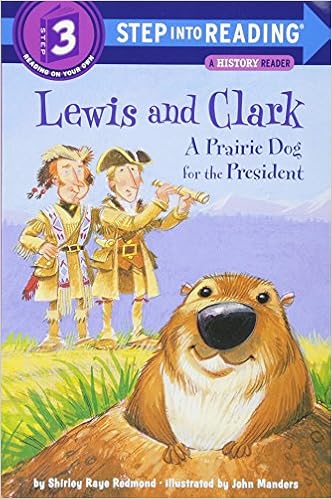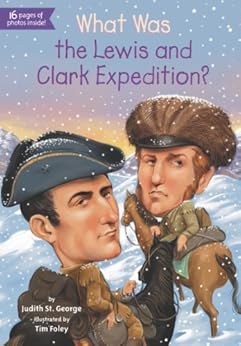Standards Aligned
Literature Grouping: Sacagawea and the Lewis and Clark Expedition
The
purpose of this unit is to explore the events of the Lewis and Clark
expedition through the eyes of their Native American companion,
Sacagawea. Sacagawea traveled with the expedition for thousands of
miles, helping Lewis and Clark navigate the land, as well as to
establish relationships with the various tribes of Native Americans
that they encountered along the way. The first book in this unit is
the fictional title The Crossing:
The Crossing
Napoli, Donna Jo. The Crossing. Atheneum Books For Young Readers, 2011.
Lexile Level: 690
Activity for Grades 3-4
Alignment
Learning Standards
CCSS.ELA-LITERACY.RI.4.1
Refer to details and examples in a text when explaining what the text says explicitly and when drawing inferences from the text.
Refer to details and examples in a text when explaining what the text says explicitly and when drawing inferences from the text.
CCSS.ELA-LITERACY.RI.4.2
Determine the main idea of a text and explain how it is supported by key details; summarize the text.
Determine the main idea of a text and explain how it is supported by key details; summarize the text.
CCSS.ELA-LITERACY.RI.4.3
Explain events, procedures, ideas, or concepts in a historical, scientific, or technical text, including what happened and why, based on specific information in the text.
Explain events, procedures, ideas, or concepts in a historical, scientific, or technical text, including what happened and why, based on specific information in the text.
CCSS.ELA-LITERACY.RI.4.6
Compare and contrast a firsthand and secondhand account of the same event or topic; describe the differences in focus and the information provided.
Compare and contrast a firsthand and secondhand account of the same event or topic; describe the differences in focus and the information provided.
Learning Goals
The goal of this activity is to encourage students to utilize
information from multiple text sources of varying degrees of
difficulty, and combine what they have learned into a complete
understanding of a historical figure's role in an important
historical event.
Learning Objectives
The objectives with this activity include the three domains in
Bloom's Taxonomy. For the affective domain, students will read
multiple items, and organize the information that they have learned
from within those items. For the cognitive domain, students will
need to analyze the information that they have gained, applying it to
a written assignment. Finally, for the psychomotor domain, students
will be asked to prepare a written assignment.
Learning Outcome
Students
will have read multiple items pertaining to one historical event.
Students will then have prepared a written assignment in which they
organize and articulate their knowledge regarding an important
historical figure's role in an that important historical event.
Activity
The
activity for this unit consists of a written assignment in which
students will be asked to discuss the role of the Native American
Sacagawea during the Lewis and Clark expedition. Over the course of
the unit, students will read the books The Crossing,
I Am Sacagawea,
Lewis and Clark: A Prairie Dog for the President,
The Lewis and Clark Expedition,
and finally, one to two chapters from What
Was the Lewis and Clark Expedition?.
Students will then organize the information learned from these
materials into a written response wherein they will discuss their
impressions of Sacagawea's role in the expedition, paying particular
attention to what information was universal across the texts, and
what information may have conflicted.
Bibliographic Information of the Nonfiction Books
Meltzer, Brad, and Chris Eliopoulos. I am Sacagawea. Dial Books for Young Readers, 2017.
Lexile Level: 530L
Rationale:
This picture book is an excellent biography of Sacagawea, and serves
as one of the primary sources of information for the written
assignment, as it focuses entirely on her. It is smartly written
and, despite the lower Lexile level, speaks directly to the reader
with a level of intelligence that is befitting of a more advanced
book.
Perritano, John. The Lewis and Clark Expedition. Scholastic, Inc, 2010.
Lexile Level: 880L
Rationale:
This book is bursting at the seams with facts and images about the
expedition. The lexile level on this book seems a bit misleading, as
the vast majority of the pages are images with bits of text to
accompany them. Though this book does not feature Sacagawea as
heavily as the others, it is far and away the most informative of the
actual expedition itself.
Redmond, Shirley Raye, and John Manders. Lewis and Clark: A Prairie Dog for the President. Random House Children's Books, 2003.
Lexile Level: 320L
Rationale:
This easy reader is nonetheless both informative and charming in its
presentation. It is a nonfiction book with a humorous spin on the
expedition that will serve as both a source of useful information, as
well as a bit of a break from the seriousness and challenge of some of the
other titles.
St. George, Judith, and Tim Foley. What Was the Lewis and Clark Expedition. Grosset & Dunlap, 2014.
Lexile Level: 860L
Rationale:
This should be the finale book used in the unit. It is a longer
book, clocking in at 108 pages. It is the most fully realized, both
as as an exploration of the expedition, and as a vehicle for
information regarding Sacagawea's role in the expedition. I would
recommend assigning 2-3 chapters to each student, as each chapter
breaks down to be around 6-8 pages of fairly complex text.




